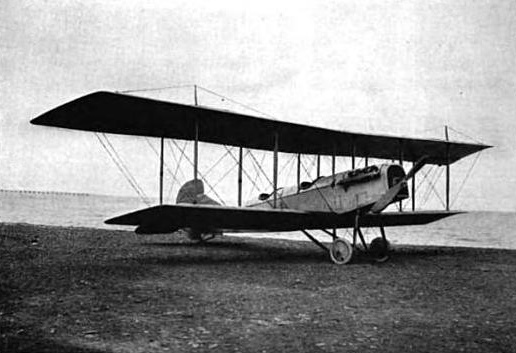Coming in For a Landing
Shortly after the turn of the century, humanity created flying machines which were capable of hovering over land or sea. It didn’t take long for those with the technology to use it for military advantage, changing the face of warfare. Soon after, leaders in the retail world explored employing these aircraft for commercial purposes. Wouldn’t it be cool if your groceries could be flown to your house from warehouses untold distances away? And in under half an hour?
If you’ve been following the news, the story above sounds familiar — it’s basically the tale of Amazon’s foray into drones for home delivery. But the story isn’t about unmanned aircraft in 2013. It’s about regular airplanes from nearly a century ago.

In September of 1919, a Curtiss airplane like the one seen above took off from what Popular Science described as “a large New York department store.” It was carrying “a bungalow bed, a floor lamp, a fireless cooker, three pillows, some curtains, napkins, table-cloths, towels, a taboret, a carpet-sweeper, a percolator, and a rug,” somehow all crammed into the plane’s lone passenger seat. The flight landed at a golf course about thirty miles away from its departure point, which to modern ears is already strange. But what makes this delivery even strangers — and curiously analogous to the proposed Amazon Prime Air drones — is that all that stuff was destined for one household: “a suburban customer” of the department store who lived near the golf course.
Popular Science noted the potential for the home delivery-by-airplane business, but offered a caveat: those wanting to avail themselves of such convenience will have to live by golf courses open to receiving the occasional airplane on the green, such as the person in the example above, or “have large back yards.” And as we know a century later, this didn’t happen. While both the postal service and private parcel shippers took to the skies, they landed at airports. Planes simply aren’t landing at our doorstep with our groceries or a new television set.
But as recent news shows, the logistical difficulties won’t stop us from trying.
Bonus Fact: The 1919 story isn’t the only example of airplanes being used for door-to-door service, either. In 1956, a 26 year-old man named Tommy Fitzpatrick stole a plane from a New Jersey airport and went to the bar — literally. As the New York Times reports, Fitzpatrck flew into Manhattan, landing on St. Nicholas Avenue near 191st Street in front of a pub he frequented, winning a bar bet in the process. Two years later, he did it again, landing on Amsterdam and 187th Street. His explanation for doing it twice? Per the Times, “Mr. Fitzpatrick told the police that he had pulled off the second flight after a bar patron refused to believe he had done the first one.”
From the Archives: Flying Signs: The incredible physics behind airplanes that carry messages in tow, for those on the ground to read.
Related: A drone of your very own.
